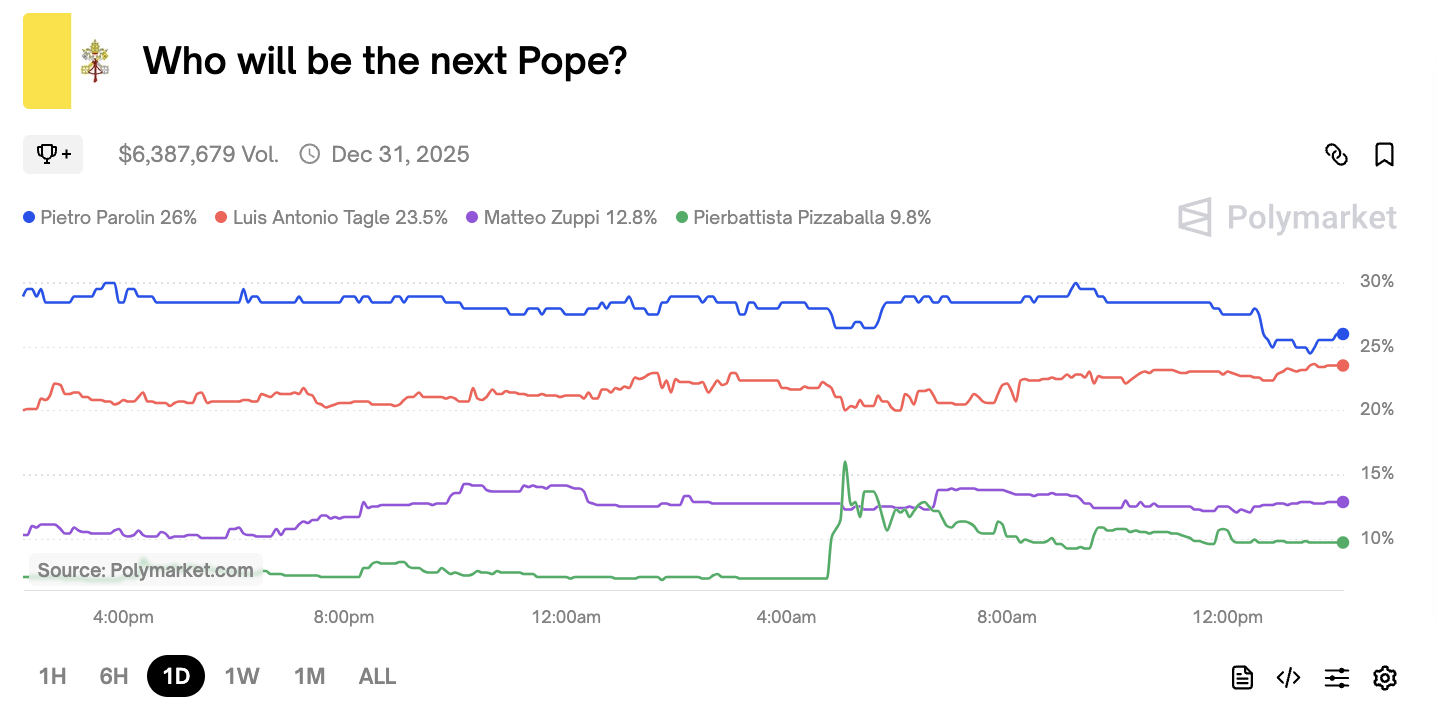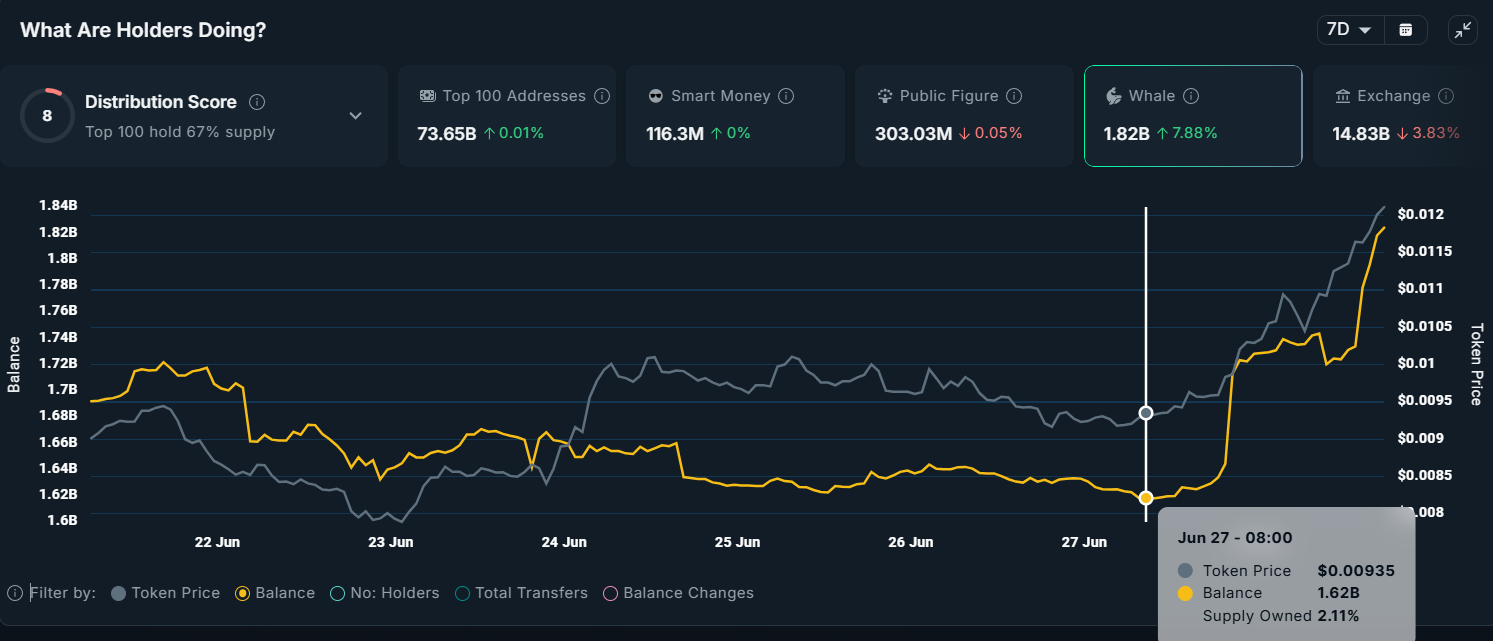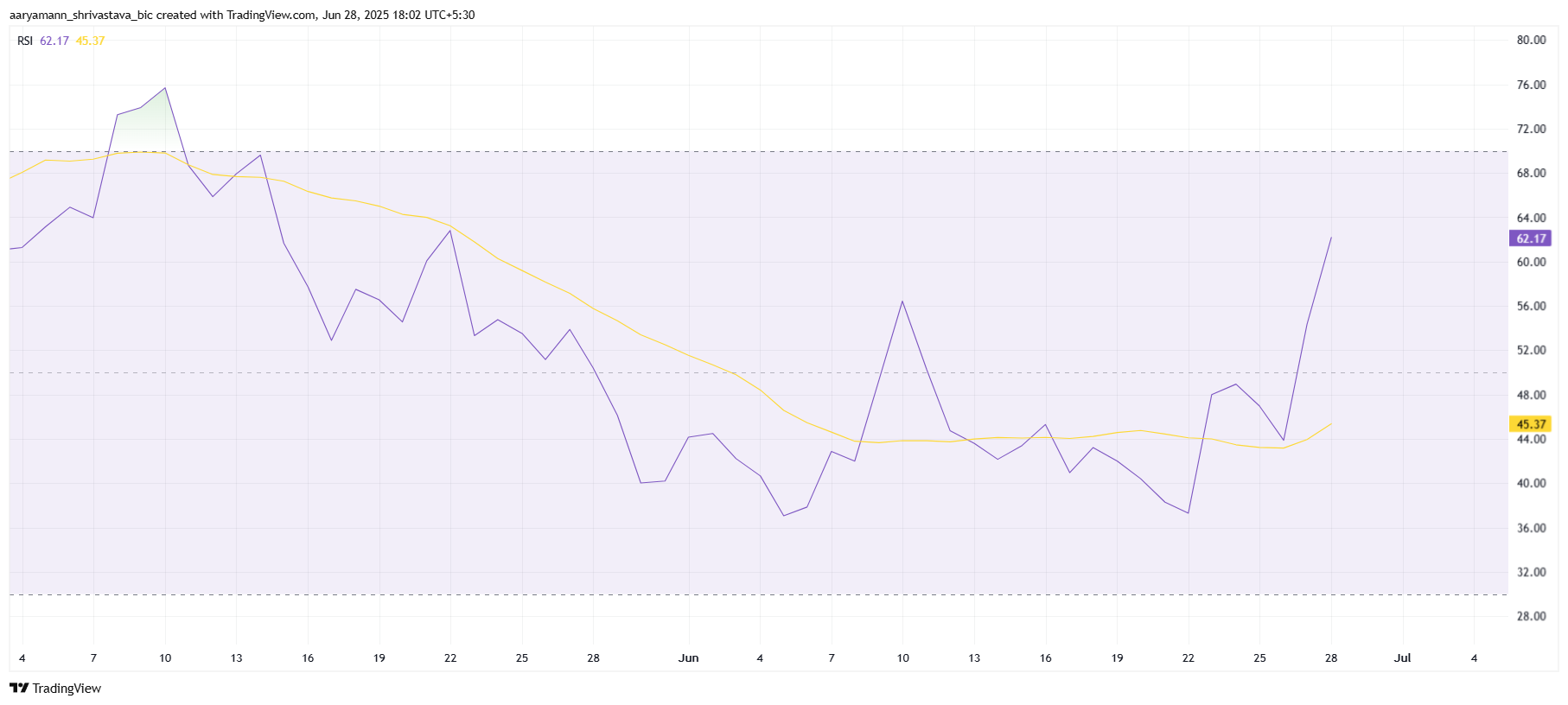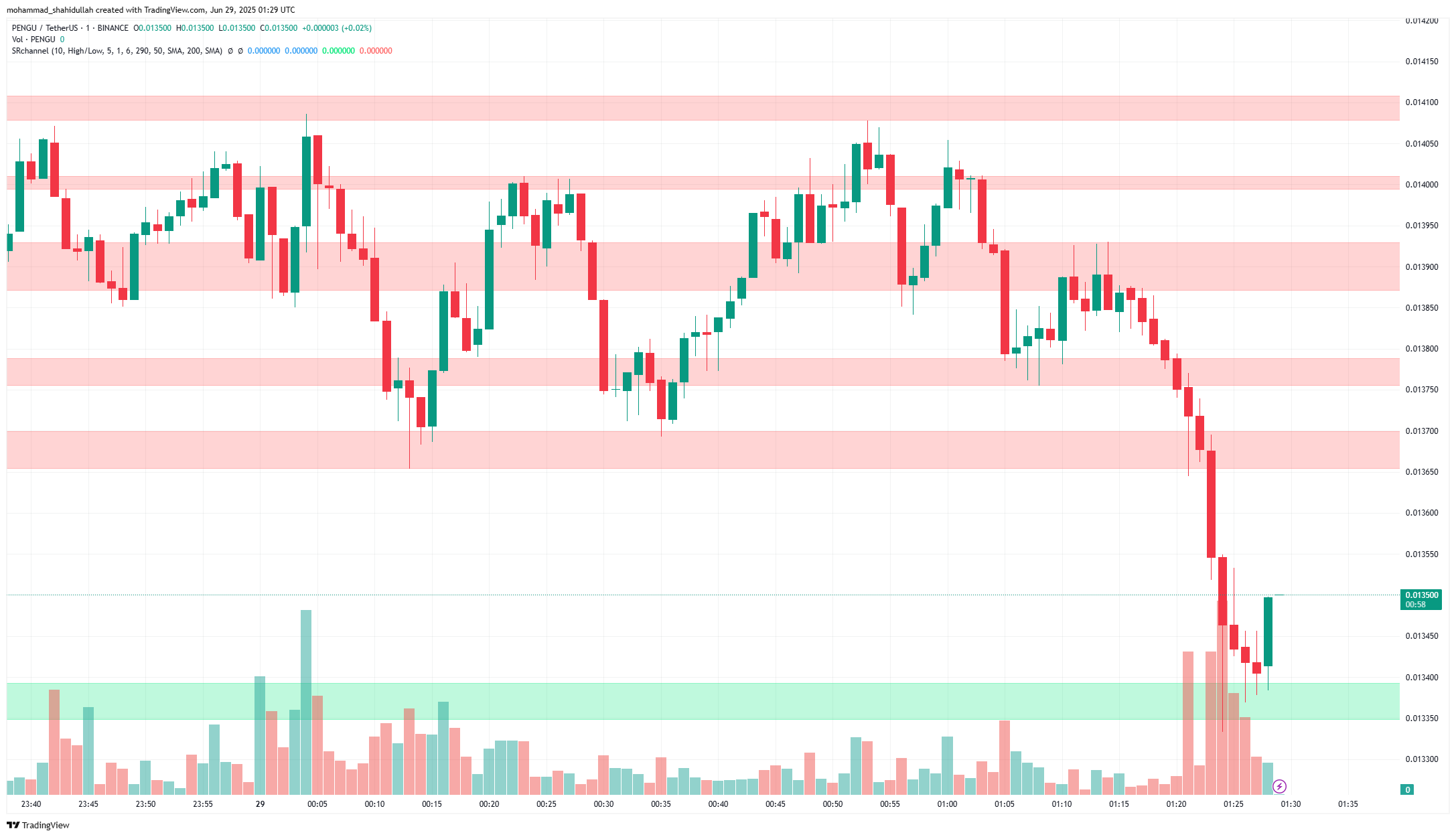Meme coins to watch today include LUNA, HOUSE, and TURBO. All three are showing strong price action and rising volume. LUNA is up 92% in the past seven days as part of the surging Virtuals Protocol ecosystem.
HOUSE gained nearly 26% despite a short-term pullback and continues to draw attention from Solana meme coin traders. Meanwhile, TURBO spiked 25% in 24 hours, with volume exploding over 200%, signaling growing momentum.
Luna by Virtuals (LUNA)
- Launch Date – October 2024
- Total Circulating Supply – 1 Billion LUNA
- Maximum Supply – 1 Billion LUNA
- Fully Diluted Valuation (FDV) – $25.9 million
The Virtuals Protocol ecosystem has been trending, with VIRTUAL up 93% in the past seven days. LUNA followed with a 76% gain, now the fourth-largest token in the ecosystem by market cap, just behind VIRTUAL, AIXBT, and VADER.
If momentum holds, LUNA could test resistance at $0.032. A breakout may push it toward $0.041, opening the door for further upside.

On the downside, support lies at $0.0228. If it breaks, LUNA could fall to $0.0173, erasing a chunk of its recent gains.
The next few days are critical. A strong push above resistance or a breakdown below support will likely set the tone for LUNA’s short-term trend.
Housecoin (HOUSE)
- Launch Date – April 2025
- Total Circulating Supply – 998.76 Million HOUSE
- Maximum Supply – 1 Billion HOUSE
- Fully Diluted Valuation (FDV) – $82.52 Million
HOUSE has been one of the most talked-about meme coins in recent weeks. It quickly reached over $100 million in market cap, though it has pulled back in the last few days.
Originally launched on PumpFun, HOUSE quickly gained traction and became a standout among Solana meme coins.
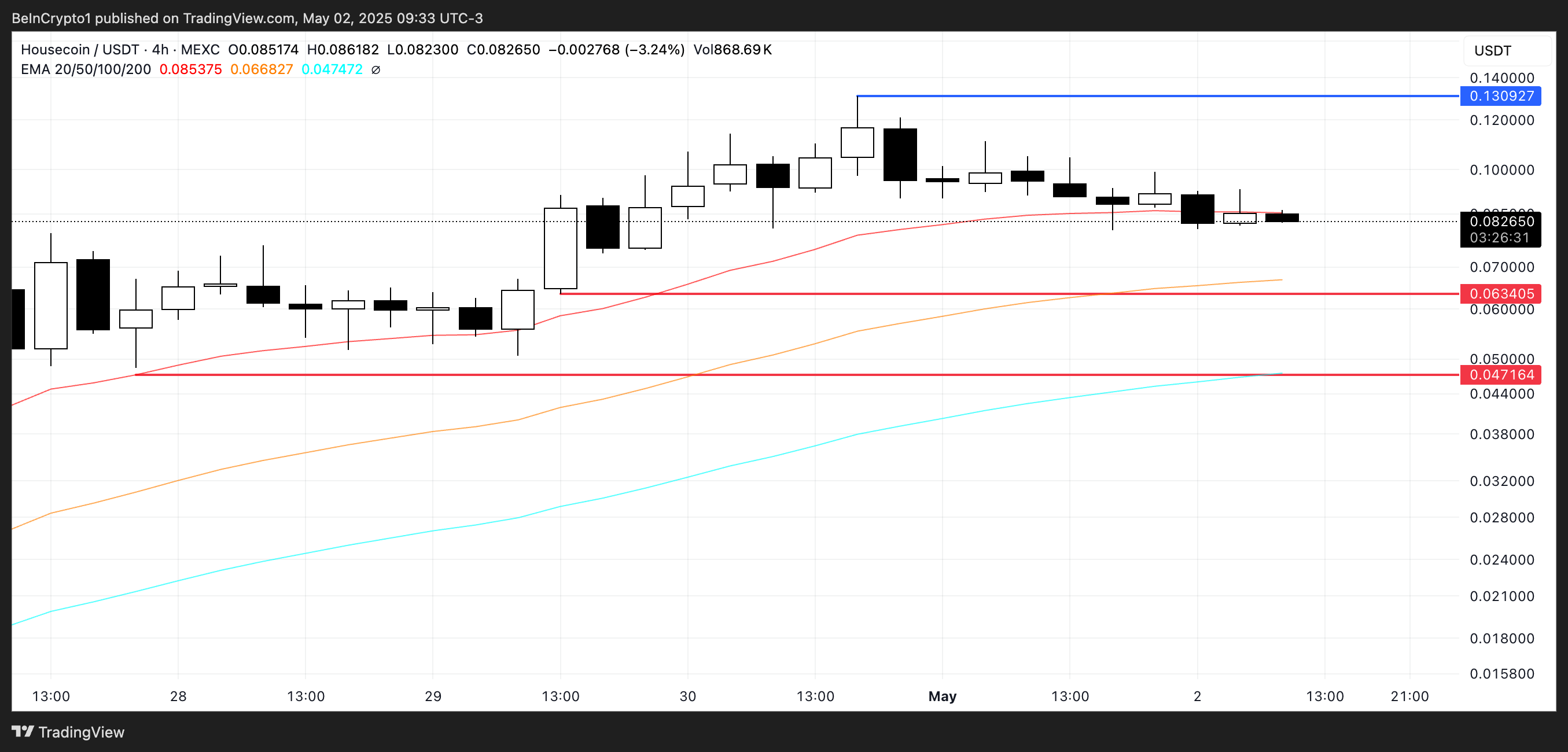
Despite a 15% dip in the last 24 hours, Housecoin is still up nearly 26% on the week. If the pullback continues, key support lies at $0.063—losing that could send it to $0.047.
If buyers return, HOUSE could retest $0.13 and possibly reach $0.15, setting a new all-time high and reigniting the hype.
TURBO
- Launch Date – May 2023
- Total Circulating Supply – 69 Billion TURBO
- Maximum Supply – 69 Billion TURBO
- Fully Diluted Valuation (FDV) – $397.69 Million
TURBO has jumped nearly 30% in the past week, with a 25% gain in just 24 hours. Its 24-hour volume surged over 200%, hitting $282 million—about 70% of its market cap—making it one of the most interesting meme coins to watch today.
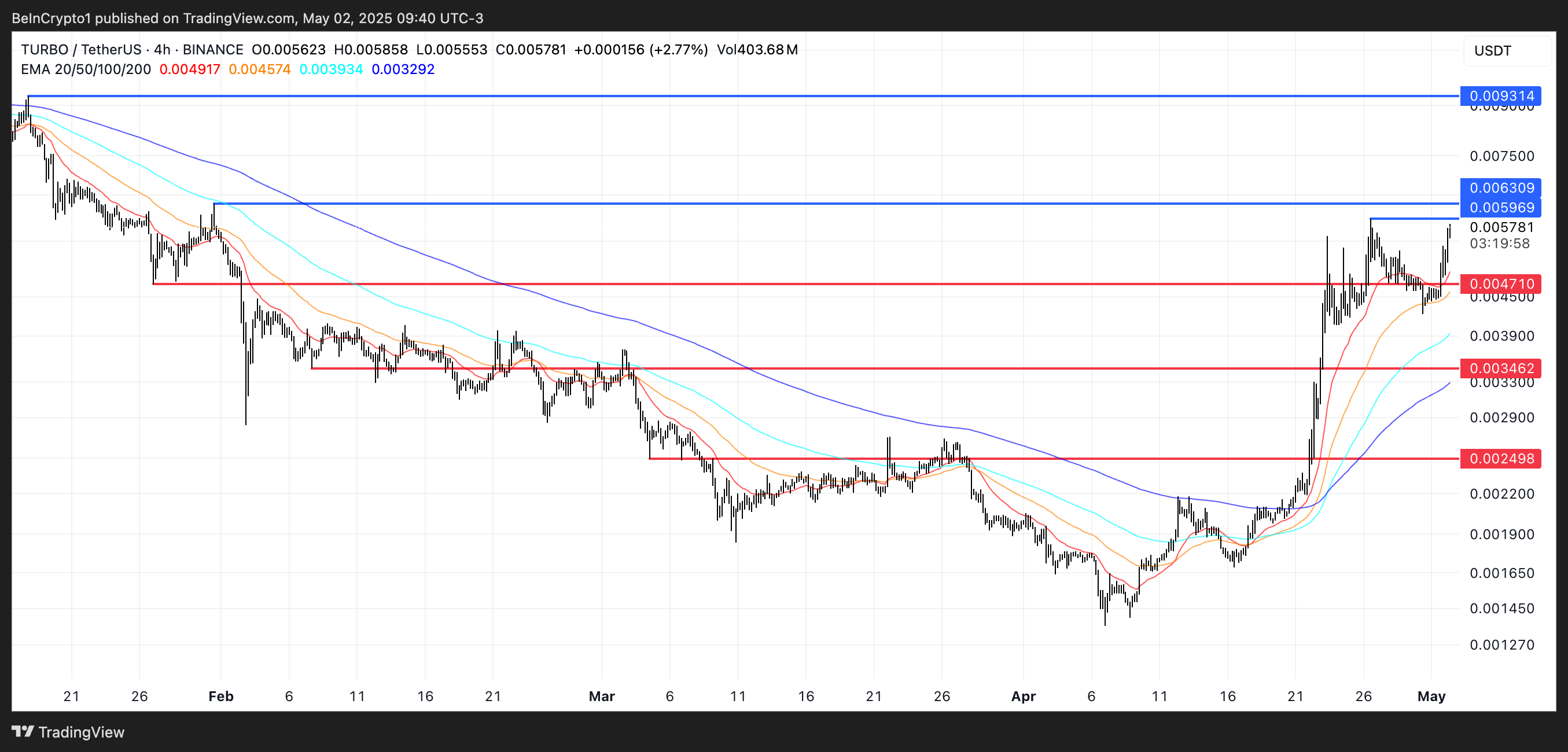
If momentum holds, TURBO faces nearby resistance at $0.0059 and $0.0063. A breakout above both could send it up to $0.0093.
But if buying pressure weakens, support at $0.0047 becomes key. A break below that could trigger a drop to $0.0034 or even $0.00249.
The post LUNA Jumps 90% as Virtuals AI Agents Trend | Meme Coins To Watch Today appeared first on BeInCrypto.




